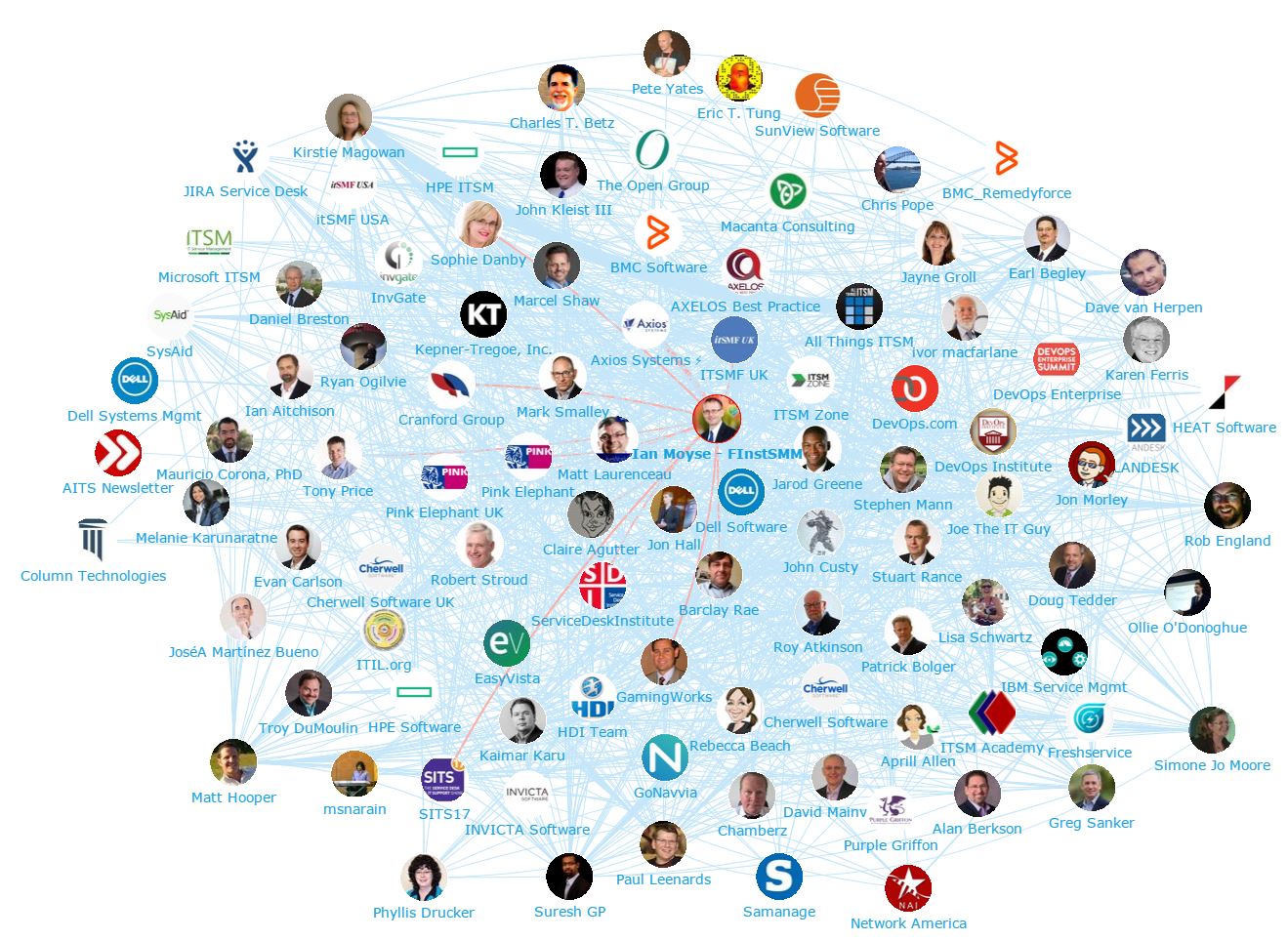Top 100: IT Service Management (ITSM) Influencers
Onalytica, a developer of social network analysis and influencer relationship management software, named Pete Yates as a Top 100 IT Service Management (ITSM) influencer for 2016 (coming in at number 74). I was pleased to be included in this very talented group along with some awesome friends and colleagues.
“IT Service Management (ITSM) describes a strategic approach for designing, planning, delivering, managing and improving the way IT is used within an organization. Some of the best examples of ITSM methods are change management, capacity planning, configuration management, disaster recovery, performance management and availability management. The goal of every ITSM framework is to ensure that the right processes, people and technology are in place so that an organization can meet its business goals”….by Joe Fields
Link to the article: click here
Thanks to Onalytica.com and Joe Fields
Why IT Service Management (ITSM)?
IT Service Management (ITSM) is critical for technology teams and organisations as a whole for several key reasons:
- Aligns IT with business goals: ITSM helps ensure IT services and operations are aligned with overall business objectives and strategies. This alignment allows IT to provide more value and support key organisational priorities.
- Improves efficiency and productivity: By implementing standardised processes and best practices (such as Incident, Problem and Change management), ITSM helps IT teams work more efficiently and productively. This leads to faster resolution of issues, reduced downtime, and improved service delivery.
- Enhances service quality: ITSM frameworks provide structured approaches for designing, delivering, and supporting IT services. This results in higher quality, more reliable services for end users and customers.
- Increases customer satisfaction: With improved service quality and faster issue resolution, ITSM leads to greater satisfaction among internal and external customers who rely on IT services.
- Reduces costs: Standardised processes, automation, and improved resource allocation through ITSM help reduce operational costs for IT departments.
- Provides better visibility and accountability: ITSM tools and processes offer greater visibility into IT operations, service levels, and performance metrics. This enables better decision-making and accountability.
- Manages risks: ITSM frameworks include processes for change management, problem management, and continuity planning that help mitigate IT-related risks to the business.
- Supports scalability: As organisations grow, ITSM provides the structure needed to scale IT operations and services efficiently.
- Enables digital transformation: ITSM practices help organisations adapt to new technologies and drive digital transformation initiatives more effectively.
- Improves compliance: ITSM processes support regulatory compliance by providing documentation, audit trails, and standardised procedures.
- Enhances communication: ITSM facilitates better communication between IT and other business units, fostering collaboration and shared understanding of priorities.
- These IT Service Management practices can be utilised by other organisational departments such as Property, Finance and even Human Resources, where they can use the same IT Service Management system, such as ServiceNow, RemedyForce, FreshDesk, and Jira Service Desk. This will further enhance the services provided to the internal and external customers through a shared system, making use of any automation and AI built into the system.
IT Service Management (ITSM) is critical because it enables IT to operate (any other shared services) as a strategic business partner rather than just a support function. It provides the framework for delivering high-quality, cost-effective IT services that drive business value and support organisational success. For technology teams specifically, ITSM offers the tools and processes to work more efficiently, demonstrate their value, and continually improve their services.
Struggling to implement IT Service management in your organisation? Complete ITSM Guide: 4 Ways to Master IT Service Management
Stay ahead in ITSM, follow these top influencers to gain insights, stay updated on trends, and elevate your IT service strategy.
What is IT Service Management, and why is it important?
IT Service Management (ITSM) refers to the processes (such as incident or change management) and practices used by IT teams to design, deliver, manage, and improve the way IT services are provided to users. It ensures that technology aligns with business goals, improves service quality, reduces downtime, and enhances user satisfaction. ITSM is essential for maintaining efficient operations and driving digital transformation in modern organisations.


